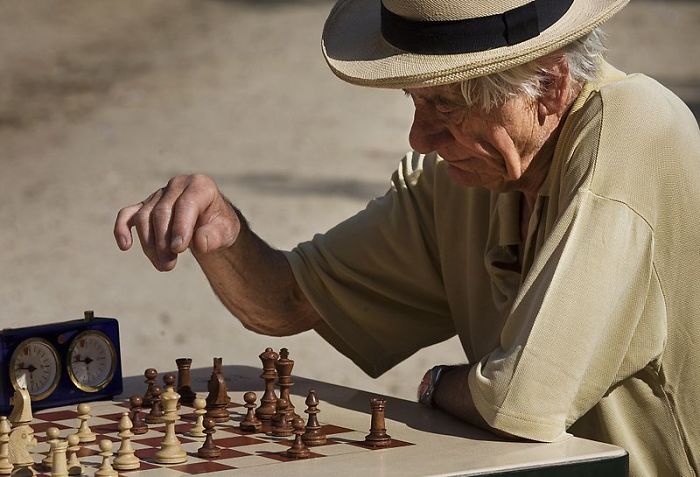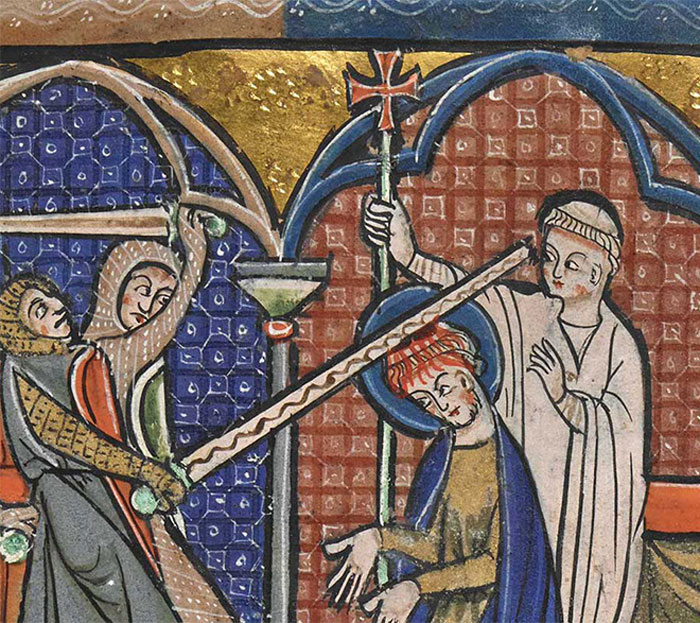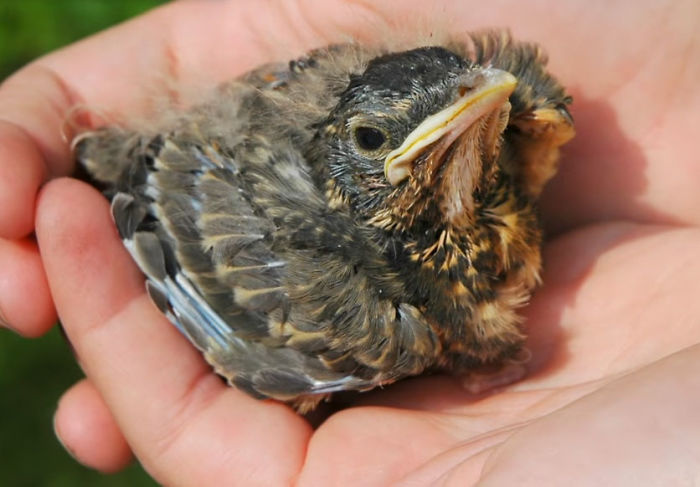Common myths and misconceptions are all around us. We might not even realize we're wrong until we're wrong. And… some facts aren't actually facts! [Dramatic gasp!] Reddit user Threedotsguy wanted to find out what widely known ‘facts' their fellow redditors know are wrong, and the educational thread went viral. Check out which myths got debunked, upvote the ones you didn't know were false, and share what other ‘facts' you know to be balderdash in the comments, dear Pandas.
Once you start going down the ‘how do I know anything for sure' rabbit hole, it's hard to stop. Before you know it, you might even end up as a philosopher with a PhD and a dozen published books about the theory of knowledge. But one thing that we really have to ask ourselves is why people tend to believe far-fetched facts, flimsy myths, and fake news.
Dr. Bobby Hoffman, psychologist and author of 'Hack Your Motivation' and 'Motivation for Learning and Performance,' explained to Bored Panda the effects that social pressure and peer influence have on our beliefs, what biases we as human beings tend to have, and what we can do to change our existing (potentially flawed) conceptions about the world. Read on for our full interview with Dr. Hoffman.
#1
"People with mental illness are NOT, in fact, more likely to be violent than the rest of the population. They're actually slightly less so, but MUCH more likely to be the victims."
The public tends to exaggerate the strength of the link between mental illness and violence. What's more, acts of violence by the mentally ill are sensationalized by the media. Research shows that the mentally ill are, in fact, more often victims than perpetrators of violence.
#2
"That humans are the only animals that have self-awareness."
The mirror test is often used as a way to see whether or not an animal possesses self-awareness. During the test, researchers place a dot or a mark on a subject and then put the animal in front of a mirror. They then wait and watch to see if the animal investigates the mark.
Some animals who have successfully passed this test are dolphins, elephants, chimpanzees, magpies, and others. The newest research indicates that self-awareness and sense of sense are far more widespread in the animal kingdom than previously thought.

Image credits: LeonardJPickard
#3

Image credits: BoredForever1
#4

Image credits: type3civilization
#5
That medieval/ancient people only lived to be ~32 years old, and at that age, they were considered ancient. That estimate is an average, which means it accounts for high infant/child mortality. Lots of ancient people lived to their 80s and older. If you made it to 30, chances were good you would make it another 30+ years.
The belief that people from the past would be shocked to see somebody that's 60 or 70 years old is false. Average life expectancy isn't the same as maximum lifespan. While the average has greatly increased over the years because of advances in technology and better nutrition, the maximum has pretty much remained stable throughout.

Image credits: Hadrian_x_Antinous
#6
That 'if you touch a baby bird, the parents will abandon/kill it.' In reality, most birds don't do that. If you help a baby bird back into its nest, as long as you try not to touch the nest a lot, then everything should be fine.
Papa and Mama birds don't recognize their young by their smell, explains All About Birds. So don't be afraid to put the tiny bird back in its nest. However, if the nest is destroyed, you can make a new one, put the chick inside, and wait to see if the parents come back. If they don't come back and you're absolutely sure that the chick would be alone, it's best to bring it to a wildlife rehabilitator.

Image credits: everythingbuttstuff
#7

Image credits: ice_fan1436
#8

Image credits: JessieOwl
#9
That claim that we only use 10% of our brains.
Neurologist John Henley at the Mayo Clinic in Rochester, Minnesota explains that evidence has shown that over the course of a day, you use 100 percent of the brain. He says that areas like the frontal cortex (responsible for self-awareness) or the somatosensory areas (which help us sense our surroundings) are active even while we're asleep.

Image credits: Aloise500
#10
That you have to put something in the mouth of a seizing person so they don't swallow their own tongue. DO NOT DO THIS. EVER.
The CDC explains that you shouldn't put anything in the person's mouth because this can injure their teeth or jaw. You should also not hold the person down or try to stop their movements; don't give them mouth-to-mouth breaths, and don't give the person any food or water until they are fully alert.
What you can do is ease a person having a seizure on the floor, turn them onto one side to help them breathe, put something soft under their head, and remove their glasses if they're wearing any.
#11

Image credits: WolfeS93
#12

Image credits: Blackman157
#13
We're also not "descended" from chimps or gorillas or other living great apes. Instead, we share a common ancestor. Or, to put it another way, we are distant cousins to the other extant great apes, not great great great x5000 grandkids.
Humans are most closely related to lesser apes like gibbons and great apes like chimpanzees, gorillas, and orangutans. These hominoids (aka gibbons, great apes, and humans) emerged and diversified during the Miocene epoch, around 23 to 5 million years ago. According to scientists, the last common ancestor that humans and chimps had lived around 6 to 7 million years ago.

Image credits: DracheGraethe
#14

Image credits: Apellosine
#15
The British have worse teeth than Americans. Brits have fewer missing teeth on average, and the DMFT index is 0.8 for Brits but higher at 1.2 for the United States. There are cultural differences, with natural teeth colour being considered natural in the UK, but unnatural in the USA where flourescent white is considered correct.

Image credits: WisdomDistiller
#16

Image credits: ebee500
#17
That if you have a cold, you should get lots of Vitamin C. This is completely down to one scientist named Linus Pauling who had a theory that massive doses of Vitamin C would cure colds. Subsequent studies have shown he was wrong and any benefits are minimal at best. Yet I still get everyone telling me to drink orange juice whenever I get a sniffle.
However, Harvard Health Publishing states that taking at least 200 mg of vitamin C each day seemed to reduce the duration of cold symptoms by around 8 percent in adults and 14 percent in kids. Or, in other words, around one less day of being ill. While it doesn't seem like a lot, it could have a huge effect nationwide or worldwide.

Image credits: robson_bobson
#18
The idea that chloroform quickly knocks you out. In the real world, it takes several minutes to knock you out, not the seconds you see in TV and movies.
How quickly you're knocked out depends on your bodyweight, air circulation, the strength of the solution, etc. You'll stay knocked out by the chloroform for as long as you're breathing it. Once it's removed, however, recovering from the effects can take roughly 20 to 30 minutes during which you will feel nauseous and might even vomit. Headaches can last hours.

Image credits: socksinsandalsinsnow
#19

Image credits: EricKei
#20
Napoleon wasn't small. He was just the victim of good propaganda by the eventual winners.
Napoleon was most likely around average height: 1.69 meters or just over 5’5”. The myth that Napoleon was short comes from two sources. First of all, the French inch (pouce) at the time was 2.7 centimeters while the Imperial inch was just 2.54 centimeters. So using the French measurement system of the time, Napoleon was 5’2” (aka '5 pieds 2 pouces') tall which is equal to the 'normal' 5’5”. Secondly, British cartoonist James Gillray was very much responsible for depicting Napoleon as being tiny leader prone to rage and the image stuck in the public's mind.
- You Might Also Like: “Can’t Afford A Lot Of Food”: 22 Times Delusional Bosses Got A Reality Check From Employees

Image credits: TheNameIsPippen







